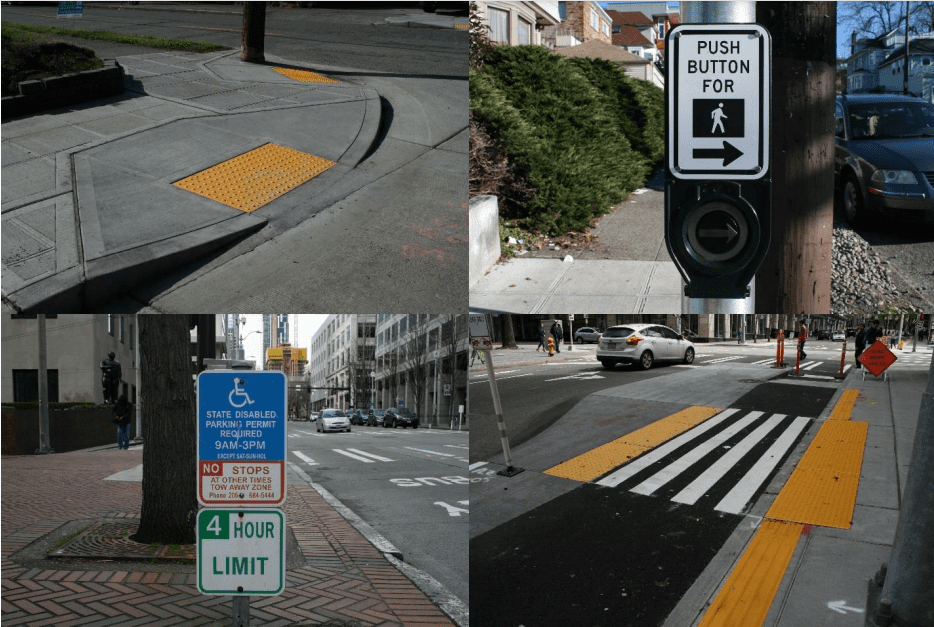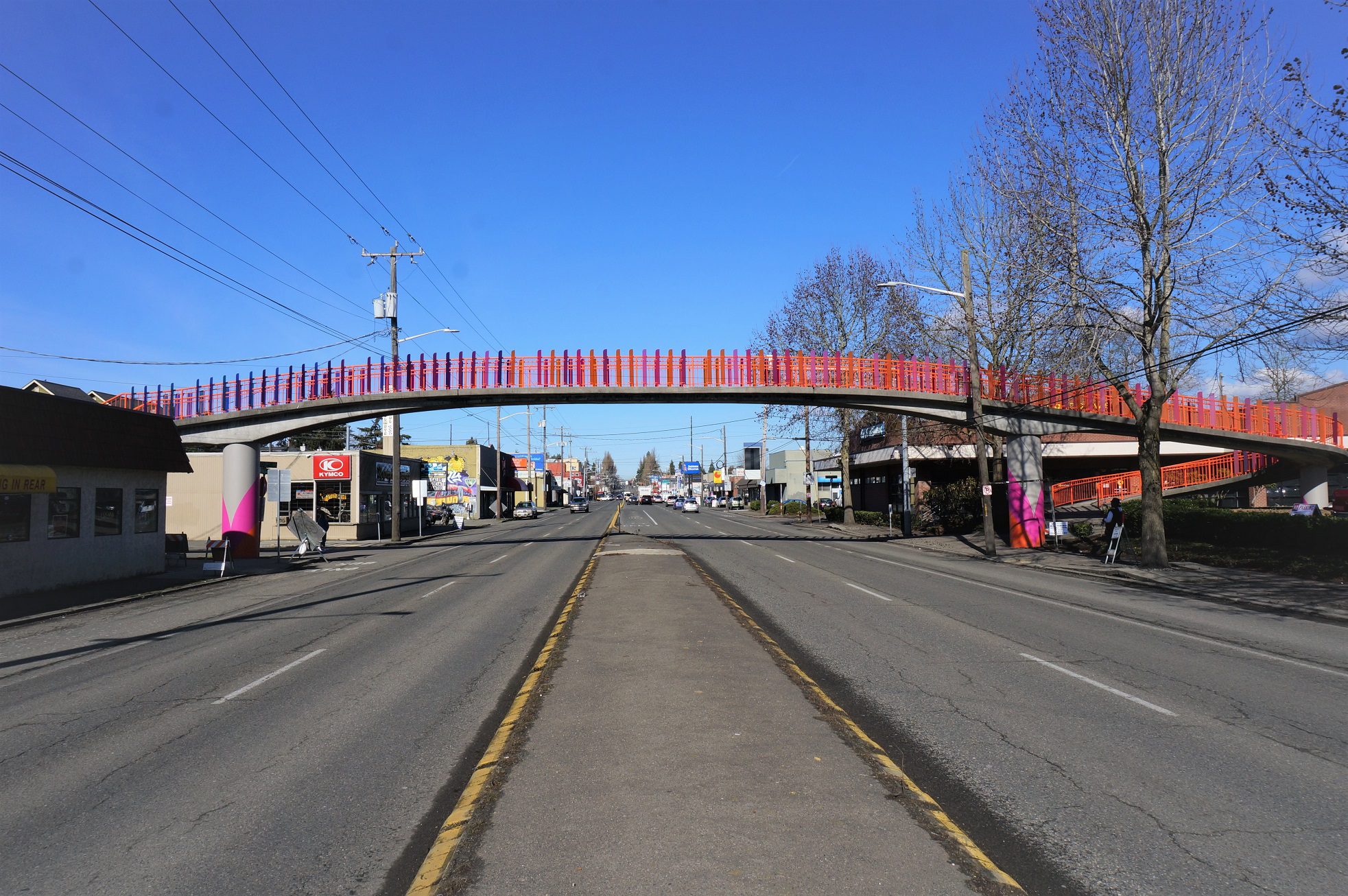 The Fremont Bridge in 2015. Photo: SDOT
The Fremont Bridge in 2015. Photo: SDOT In case you missed it, we’re sharing highlights from the SDOT Blog each month. Here are some of our top blog posts from August.
SDOT Blog Monthly Highlights – August 2022
Please note: You can click on the headlines to go directly to any specific blog post (#1-5) – or just read on for a shorter recap of each post and a photo.
1) In honor of the anniversary of the Americans with Disabilities Act, here are some ways we help make Seattle more accessible.
We opened August by honoring the passage of the Americans with Disabilities Act, which became law in 1990. At SDOT, our ADA Program includes planning and making improvements that help people of all abilities have access to Seattle’s sidewalks, parking, transit stops, and more.

Our work to improve accessibility and inclusion within public spaces is varied and ongoing. To increase public awareness and understanding of ADA standards, we thought it would be helpful to highlight some ways these measures show up in the day-to-day. This blog post points out features important to making our pedestrian network more accessible, such as curb ramps and detectable warnings at street crossings. We also talk about the funding and processes we use to build them.
Beyond it just being a legal requirement, we strive to improve accessibility and inclusion within the public right-of-way because it’s the right thing to do. In alignment with our key values and goals – equity, sustainability, livability, mobility, safety, and excellence – we’re going to keep working with you, Seattle community members, to learn how we can do better and improve accessibility in all our projects.

2) LEVY DOLLARS AT WORK | Take our survey to help develop a better, safer Aurora Avenue N and learn about other projects in the area!
We began gathering feedback on Aurora Ave N to help make the street work better for everyone.

We’re planning improvements to Aurora Ave N as part of the Aurora Ave Project and want to hear from you via our quick survey, which is open through September 30.
Aurora Ave N connects communities, people, and goods throughout north Seattle and beyond. However, like other major arterial streets in Seattle, Aurora Ave N has continued to see a concerning and tragic trend of life altering and life ending crashes. In addition, access to transit must be improved. The Aurora Ave Project will create a design for the Aurora Ave N corridor that enhances safety, mobility, and accessibility for all travelers.
We’re seeking community perspectives to inform the project through an initial round of public outreach. Please take our quick survey and share your experiences traveling on Aurora Ave N. Your responses will help us better understand community priorities and interests, and design improvements to help address your concerns.

3) Ride Now pilot program recap – what went well and lessons for the future
We recapped the Ride Now pilot program, including what went well and what we learned. Ride Now provided free and discounted rides to transit and other places for people with disabilities, seniors, and their caregivers.

The Ride Now pilot program tested the public demand and feasibility for a program of this kind. We found that there is public interest in a flexible, easy to access program for on-demand ride vouchers.
Some quick stats on the program:
- We distributed over 6,700 vouchers to about 1,000 participants
- In total, about 58% of participants used at least one voucher
- Riders took over 1,400 trips (on average, about 2 trips each)
- The typical trip was under 3 miles, took about 11 minutes, and cost riders under $5
- Riders rated Ride Now 4.1 out of 5 stars on average
We plan to use the lessons we learned from this program to inform our ongoing work, including considering similar programs in the future. While we don’t have any specific programs currently planned, this pilot program helps provide valuable information for the future.
4) The West Seattle Bridge is expected to reopen on September 18
We made a major West Seattle Bridge announcement: we expect to reopen the bridge on Sunday, September 18.

The bridge is stronger and safer now that we have repaired cracking and added nearly 60 miles of steel cable “backbone” to the bridge. The new post-tensioning system works in tandem with other repairs to the bridge, including an extensive network of reinforced carbon fiber sheets wrapped inside and outside the bridge walls like a cast on a broken bone. Crews have also extensively injected epoxy into cracks to prevent further deterioration or corrosion and fuse the cracked concrete. These systems of repairs have prepared the bridge to handle decades of heavy traffic, changes in temperature, and extreme summer and winter weather.
At the end of August, construction crews removed the final two hanging work platforms that were attached to the bridge for repair access, signaling that repair work is nearing completion.
5) Building bridges: The history behind the Fremont, University, and Ballard bridges
Finally, we took a look at Seattle history through the Fremont, University, and Ballard bridges, including how they were designed and built.

The three bridges—each a movable bridge along our city’s busy Ship Canal, and three of the many bridges we own, operate, inspect, and maintain throughout the city—were built in the early 1900s. Our work to keep these bridges in good condition includes giving them cool water baths in the summer and conducting routine and special inspections year-round. This ensures the bridges can safely operate to accommodate travelers on land and by water.
Keeping our bridges well-maintained supports our core value of mobility and our goal to reliably connect people, places, and goods. Thanks for reading and learning a little more about Seattle’s transportation history!
